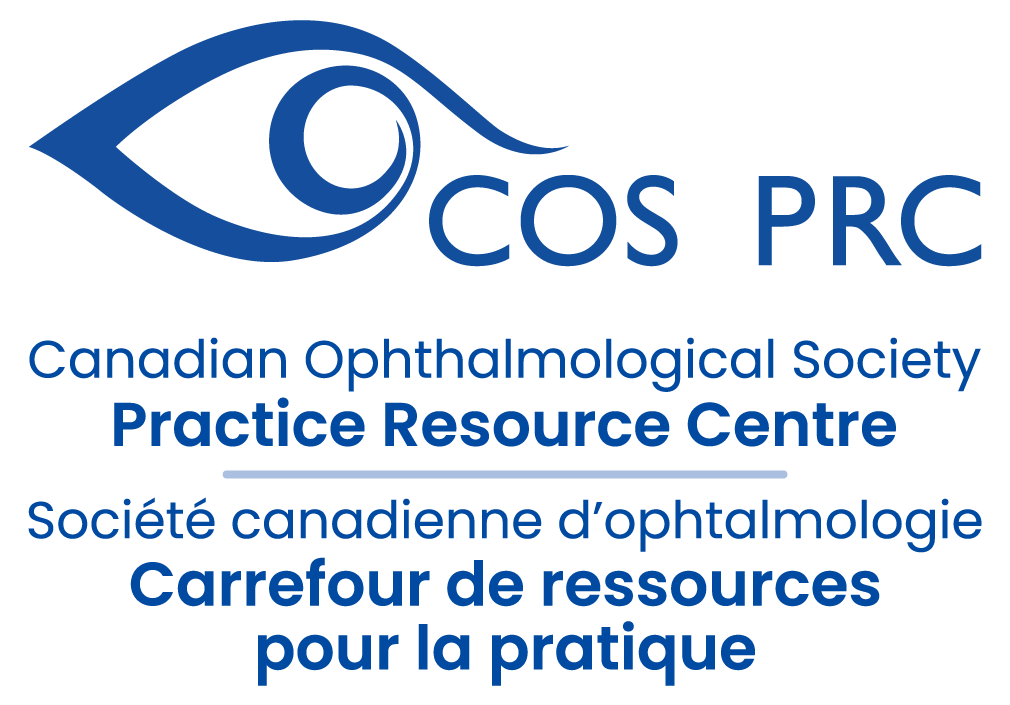Advocacy is essential for protecting and advancing ophthalmology as a profession. Whether addressing patient access to care, healthcare system sustainability, or funding for vision research, your voice can make a difference. Engaging with policymakers ensures that ophthalmology remains a priority in healthcare discussions.
Benign or Malignant? A Introductory Guide to Eyelid Lesions in the Primary Care Setting
Authors and Affiliations:
Mostafa Bondok, MD1; Anne Xuan-Lan Nguyen, MDCM2; Edsel Ing MD, PhD, MBA, MEd, MPH3,2
1: Section of Ophthalmology, Department of Surgery, Cumming School of Medicine, University of Calgary, Calgary, Canada
2: Department of Ophthalmology and Vision Sciences, University of Toronto Temerty School of Medicine, Toronto, Canada
3: Department of Ophthalmology and Visual Sciences, University of Alberta, Edmonton, Canada
Corresponding Author
Edsel Ing MD PhD FRCSC MEd MPH MIAD MBA
Professor & Chair of the Department of Ophthalmology & Visual Sciences
Chief of Ophthalmology Edmonton Zone
10240 Kingsway Avenue, Royal Alexandra Hospital, Edmonton, Alberta, T5H 3V9
(c): 780-735-8784; (e): [email protected]
Funding Statement: This research did not receive any specific grant from funding agencies in the public, commercial, or not-for-profit sectors.
Declaration of Authors’ Competing Interests: The authors indicate no financial support or conflicts of interest. The authors have no proprietary or commercial interest in any materials discussed in this article. All authors attest that they meet the current ICMJE criteria for authorship.
Eyelid lesions are common in primary care
Most eyelid lesions are benign, but 5-10% of skin cancers are periocular, with 90% being basal cell carcinoma (BCC) and 5% squamous cell carcinoma (SCC) [1]. Risk factors include age, UV exposure, family history, immunosuppression, and fair skin [1]. Sebaceous carcinoma, malignant melanoma and Merkel cell carcinoma are important but less common eyelid malignancies.
Recognition and clinical evaluation of malignant eyelid lesions is crucial
BCC and SCC often affect the lower eyelid or medial canthus due to sun exposure. Evert the eyelids to evaluate the palpebral conjunctiva and fornix and assess for tissue fixation [1]. Features of malignancy include skin ulceration, telangiectasia, loss of eyelashes, distortion of eyelid architecture, and crusting [1,2]. Assess ocular motility, palpate regional lymph nodes, and scan sun-exposed areas on the face and body for other lesions. Unilateral blepharitis, or recurrent chalazia may masquerade as sebaceous carcinoma. The “ABCDE” criteria (Asymmetry, Border irregularity, Colour variation, Diameter >6mm, Evolution) aids in the evaluation of eyelid malignant melanoma.
Refer lesions with malignant features
Malignant lesions can resemble benign ones, making diagnosis challenging [1]. Refer suspicious cases to an oculoplastic surgeon or dermatologist for biopsy [1,2]. Treatment typically involves surgical excision with clear margins via Mohs or frozen section. For inoperable BCC, vismodegib is an option for extensive disease, while imiquimod may treat superficial cases.
Styes and chalazia are frequent in primary care
Generally, a stye is a painful, red, and pimple-like lesion caused by infection [3], whereas a chalazion is a non-infectious, painless bump on the eyelid [2,4]. Both often resolve with warm compresses (5-10 min, 4-5x/day) and lid massage. Persistent cases (>4-6 weeks) warrant referral to ophthalmology for assessment of comorbid eye conditions (e.g., rosacea keratitis, blepharitis) [4], and possible definitive management with antibiotics, steroids, and/or incision & curettage [3,5]. Good eyelid hygiene, including lid scrubs with baby shampoo, aids prevention [3–5].
Other common benign eyelid lesions include epidermal inclusion cysts, hidrocystomas, seborrheic keratoses and nevi
Cystic, non-ulcerated lesions that transilluminate may be sweat duct cysts (hidrocystomas), while non-transilluminating cysts may be epidermal inclusion cysts. Seborrheic keratoses appear greasy and “stuck on,” with variable pigmentation. Eyelid nevi may have little to no pigmentation, and the presence of protruding hairs is not uncommon.
[1] Cook BE, Bartley GB. Treatment options and future prospects for the management of eyelid malignancies: An evidence-based update. Ophthalmology 2001;108:2088–98. https://doi.org/10.1016/S0161-6420(01)00796-5.
[2] Bernardini FP. Management of malignant and benign eyelid lesions. Curr Opin Ophthalmol 2006;17:480–4. https://doi.org/10.1097/01.ICU.0000243022.20499.90.
[3] Lindsley K, Nichols JJ, Dickersin K. Non-surgical interventions for acute internal hordeolum. Cochrane Database of Systematic Reviews 2017;2017. https://doi.org/10.1002/14651858.CD007742.PUB4/MEDIA/CDSR/CD007742/IMAGE_N/NCD007742-AFIG-FIG01.PNG.
[4] Zhu Y, Zhao H, Huang X, Lin L, Huo Y, Qin Z, et al. Novel treatment of chalazion using light-guided-tip intense pulsed light. Sci Rep 2023;13:1–11. https://doi.org/10.1038/s41598-023-39332-x.
[5] Ben Simon GJ, Huang L, Nakra T, Schwarcz RM, McCann JD, Goldberg RA. Intralesional Triamcinolone Acetonide Injection for Primary and Recurrent Chalazia: Is It Really Effective? Ophthalmology 2005;112:913–7. https://doi.org/10.1016/J.OPHTHA.2004.11.037.
Joint Statement: Betoptic S Discontinuation
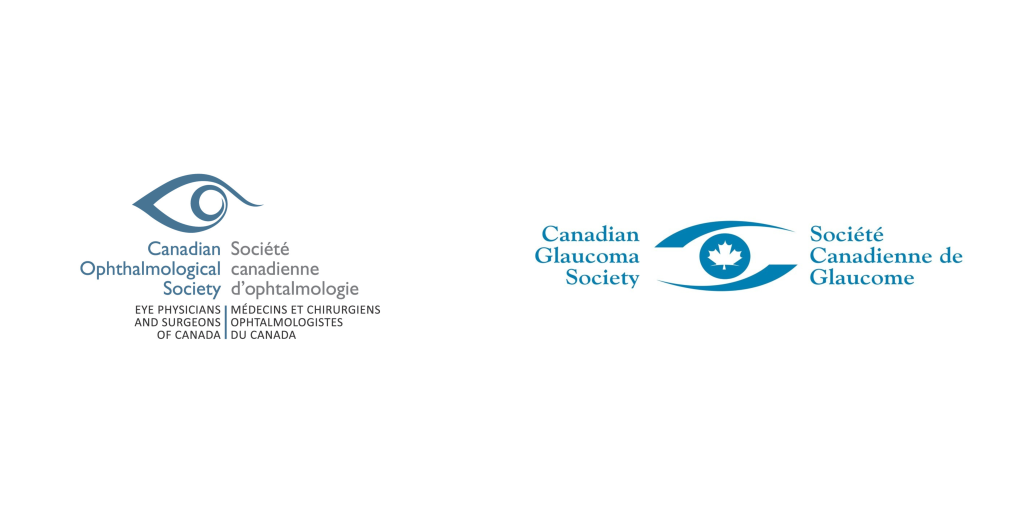
Betoptic S (betaxolol 0.25%) is being discontinued globally by Novartis. Existing Canadian supplies are expected to run out by the end of this year. There is no other marketed betaxolol eye drop in Canada. Novartis has indicated that this is a global decision and will not be reversed. The discontinuation has already occurred elsewhere across the globe. We have created a small document for our colleagues in anticipation of this change.
Betaxolol and Timolol provide similar efficacy in treating glaucoma.1 However, timolol (a non-selective beta blocker) can adversely affect pulmonary function whereas betaxolol (a selective B-1 blocker) has less impact on pulmonary function.2 Therefore, betaxolol has been recommended as the topical beta blocker of choice in patients with pulmonary disease (e.g. asthma, COPD). While betaxolol is not widely prescribed, it remains a part of glaucoma control for some patients.
We hope providers will guide patients through this drug discontinuation. Alternative management strategies may include switching to another class of topical glaucoma medication (e.g. prostaglandin analogue, carbonic anhydrase inhibitor, alpha agonist) if no contraindication exists,3 increasing ocular availability while decreasing systemic absorption of other therapies by eyelid closure or nasolacrimal occlusion,4 laser trabeculoplasty,5 minimally invasive glaucoma surgery (MIGS) or minimally invasive bleb surgery (MIBS),6 or incisional glaucoma surgery.7 Patient needs and availability of treatment will be unique across the country. We thank you, the providers, for continuing to manage excellence in care for all Canadians.
- Stewart RH, Kimbrough RL, Ward RL. Betaxolol vs timolol. A six-month double-blind comparison. Arch Ophthalmol. 1986 Jan;104(1):46-8
- Schoene RB, Abuan T, Ward RL, Beasley CH. Effects of topical betaxolol, timolol, and placebo on pulmonary function in asthmatic bronchitis. Am J Ophthalmol. 1984 Jan;97(1):86-92
- Li T, Lindsley K, Rouse B, Hong H, Shi Q, Friedman DS, Wormald R, Dickersin K. Comparative Effectiveness of First-Line Medications for Primary Open-Angle Glaucoma: A Systematic Review and Network Meta-analysis. Ophthalmology. 2016 Jan;123(1):129-40
- Flach AJ. The importance of eyelid closure and nasolacrimal occlusion following the ocular instillation of topical glaucoma medications, and the need for the universal inclusion of one of these techniques in all patient treatments and clinical studies. Trans Am Ophthalmol Soc. 2008;106:138-45
- Li X, Wang W, Zhang X. Meta-analysis of selective laser trabeculoplasty versus topical medication in the treatment of open-angle glaucoma. BMC Ophthalmol. 2015 Aug 19;15:107
- Nichani P, Popovic MM, Schlenker MB, Park J, Ahmed IIK. Microinvasive glaucoma surgery: A review of 3476 eyes. Surv Ophthalmol. 2021 Sep-Oct;66(5):714-742
- Gedde SJ, Schiffman JC, Feuer WJ, Herndon LW, Brandt JD, Budenz DL; Tube versus Trabeculectomy Study Group. Treatment outcomes in the Tube Versus Trabeculectomy (TVT) study after five years of follow-up. Am J Ophthalmol. 2012 May;153(5):789-803.e2
Similar but Different: A Practical Guide to Biosimilars in Retina

As biosimilars begin to enter the Canadian retina space, many ophthalmologists are asking: how do these agents compare to reference biologics—and what should we consider before making the switch?
Join renowned retina specialists Dr. Mike Klufas and Dr. Sophie Bakri for a 90-minute webinar that dives into the practical realities of biosimilar use—from clinical trial data to real-world adoption strategies.
📅 Date: May 29, 2025
🕒 Time: 7:00 PM ET
⏳ Duration: 90 minutes

Dr. Michael Klufas is a vitreoretinal surgeon at Wills Eye Hospital and Associate Professor of Ophthalmology at Thomas Jefferson University. He has authored over 90 publications and is a principal investigator in clinical trials on AMD, diabetic eye disease, biosimilars, and gene therapy. A graduate of Brown University and Weill Cornell, Dr. Klufas is a frequent speaker at national and international meetings.

Dr. Sophie J. Bakri is Chair of Ophthalmology at Mayo Clinic and holds the Whitney and Betty MacMillan Professorship. A vitreoretinal surgeon and Wharton MBA graduate, she has authored over 230 peer-reviewed papers and leads multiple clinical trials on retinal disease. She has received numerous accolades, including the AAO Senior Achievement Award and Retina Hall of Fame induction.
This webinar is ideal for retina specialists, general/comprehensive ophthalmologists, fellows, residents, and medical students seeking a deeper understanding of biosimilars and their role in retinal disease management.
In addition to these experts, the Biosimilars Planning Committee will be joining them in a panel discussion at the end of the webinar. We are excited to have Dr. Parnian Arjmand, Dr. Vlad Diaconita, Dr. Bryon McKay and Dr. Miral Mehta-Shounak.
Learning Objectives:
After this session, participants will be able to:
- Interpret and evaluate clinical trial data on biosimilars by analyzing key findings from pivotal ophthalmology studies and comparing their efficacy, safety, and real-world outcomes to reference biologics;
- Apply real-world evidence to clinical practice by examining case studies and identifying strategies to overcome challenges in biosimilar adoption across various ophthalmic settings;
- Navigate regulatory and practical considerations by understanding Health Canada’s biosimilar guidelines and examining reimbursement models and access barriers within Canada;
- Engage in expert-led discussions to gain insights on the evolving role of biosimilars and address common questions and concerns through interactive Q&A.
Missed the webinar?
The recording is available on demand!
This webinar would not be made possible without our sponsors. Please click here for our list of sponsors and our disclosure page.
Musculoskeletal Disorders in Ophthalmologists
The COS Ergonomics working group is pleased to share an online resource focused on musculoskeletal disorders in ophthalmologists. Developed by Queen’s University in collaboration with Weill Cornell Medicine, this online module highlights best ergonomic practices and injury prevention.
Why is this important? The physical demands of ophthalmology puts physicians at risk for work-related musculoskeletal disorders (MSDs) due to poor ergonomics.
After this module, participants will:
- Review the importance of ergonomics for ophthalmologists;
- Identify areas in the clinic and operating room that may predispose to musculoskeletal disorders;
- Learn proper ergonomic risk factor modification;
- Recognize signs and symptoms of musculoskeletal disorders, understanding the importance of early intervention.
Completion of this online module has been determined by Queen’s University to be eligible for 0.5 hours of Royal College Physicians and Surgeons of Canada Section 2: Self Learning credits.
Ready to learn more? Click below!
CJO: April 2025 Issue Highlights
The April 2025 CJO is now available online. Here are some of the highlights:
Resident Perspectives + visual abstract: Our talented team of residents have summarized 3 articles from this issue with a focus on what’s most relevant to ophthalmology learners here in Canada and around the globe. And our April visual abstract provides a visual summary of an article on the Comparison of venturi and peristaltic based phacoemulsification efficiency in routine femtosecond laser cataract surgery.
Reviews and Original Research Articles:
- Anterior uveitis for the comprehensive ophthalmologist
- Ophthalmic rehabilitation in oncology care
- Can high-resolution optical coherence tomography provide an optical biopsy for ocular surface lesions?
- When and which second-line workup to perform for uveitis: a tertiary care center experience
- Diversity gaps among practicing ophthalmologists in Canada: a landscape study
- Reoperation for congenital ptosis: characteristics, success rates, and predicting factors
- Computer-aided diagnosis of eyelid skin tumors using machine learning
Research Letters, Photo Essays, Case Reports, and more:
- Unequal access to routine eye exams in Canada: an analysis of government-funded eye exam coverage policy and associated vision health outcomes
- A national benchmarking survey for quality improvement and safety in ophthalmology
- Pigmented intratarsal keratinous cyst with polymicrobial colonization
- Indications and outcomes of intraocular lens exchange in a Canadian population
- Solar retinopathy following the April 2024 eclipse in Quebec, Canada
- Crafting the ophthalmic surgeon’s mindset
- F. Y. EYE Column
Follow the CJO on social media:
BlueSky: @cjo-jco.bsky.social
Facebook: CanJOphth
Instagram: @cjo_jco
LinkedIn: CJO – JCO
Atlantic Eye Symposium 2025
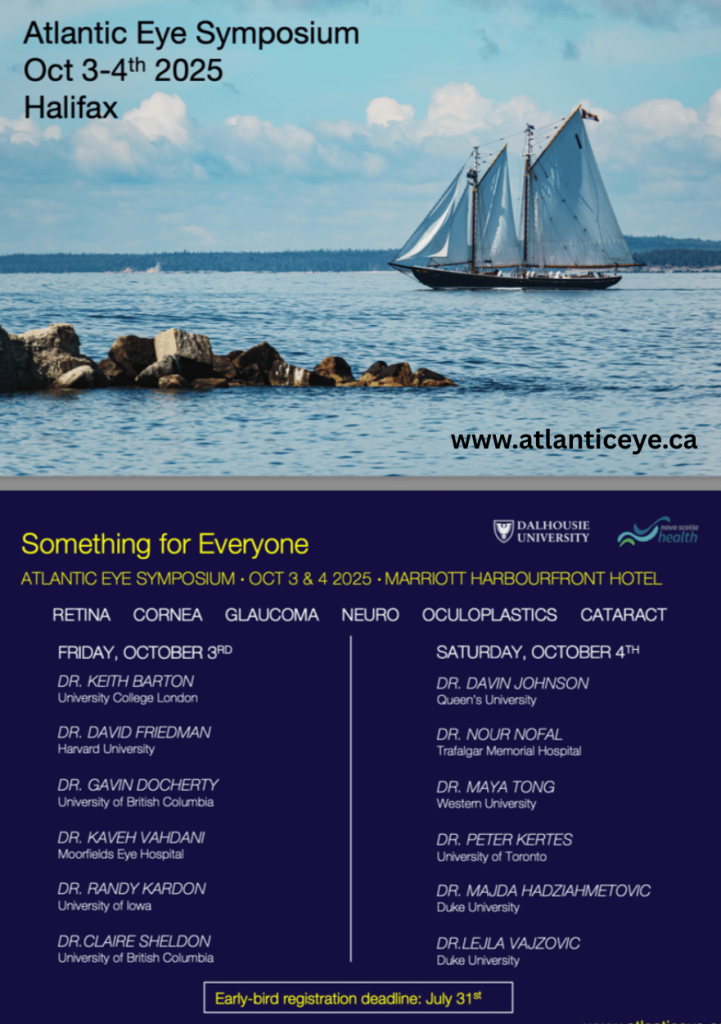
The next Atlantic Eye Symposium will be taking place in Halifax, Nova Scotia from October 3rd to 4th, 2025. For more information about the event, please visit: https://www.atlanticeye.ca/
Webinar Recording: Strengthen Your Advocacy Skills Ahead of the Federal Election

Join Our Exclusive Webinar for COS Members and Residents
COS is pleased to provide this Advocacy and Government Relations webinar for the upcoming Federal Election. This event was offered exclusively to COS members and Residents on April 16th, 2025.
We are living in unprecedented times—facing evolving healthcare challenges, an aging population, and a rapidly changing political landscape. With the upcoming federal election serving as a pivotal moment for Canadians, this is a unique opportunity to unite in shaping the future of vision health and ophthalmology.
This accredited webinar designed to equip you with the skills and key messages needed to advocate effectively with local and provincial policymakers. Your voice is critical in ensuring that ophthalmology and vision health remain a priority on the national agenda.
Did you miss this webinar? Not to worry! A recording is available for our members and residents to view below.
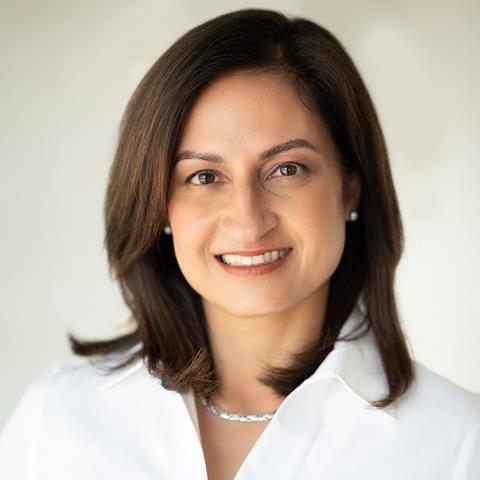
Nina Ahuja, MD
COS Chair, Council on Advocacy
COS Board of Directors
Dr. Ahuja leads the COS Advocacy Council and advises the Board of Directors on COS’ advocacy and government relations initiatives. She recently developed a framework for implementing Canada’s National Eye Care Strategy, along with other key submissions to the federal government.
Learn more about COS’ advocacy work here.

Brett Hartley, Manager, Public Affairs
Impact Public Affairs
Brett Hartley is a seasoned government relations professional with a deep passion for Canadian politics, public policy, and relationship-building. With over a decade of political experience, including significant time on Parliament Hill, he has worked closely with municipal, provincial, and federal officials to drive impactful initiatives and deliver meaningful results for both policymakers and clients.
Learning Objectives
By the end of this webinar, you will be able to:
- Understand how to effectively communicate key issues to government officials and policymakers
- Learn best practices for securing and conducting successful meetings with elected officials
- Gain insights into the current political landscape and how it affects our ophthalmology profession
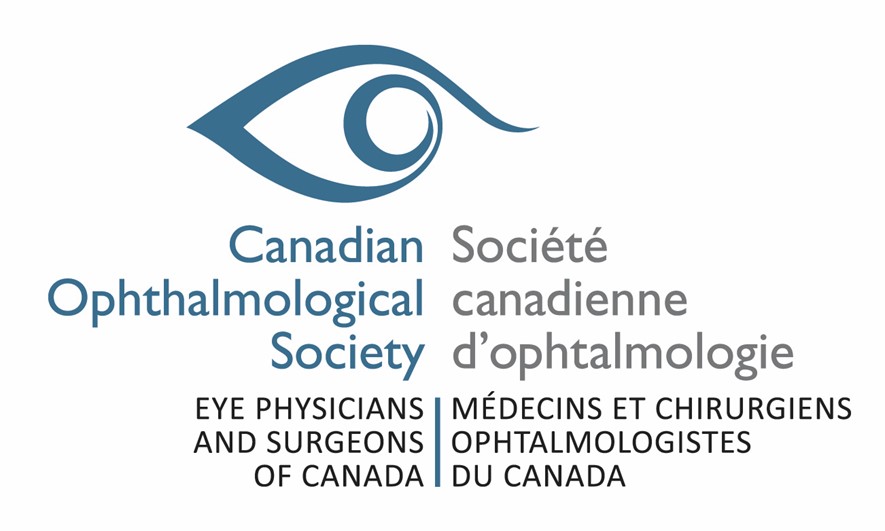
2025 ASOT Eye Trauma Annual Meeting
Submitted by: Félix Plamondon

2025 ASOT Eye Trauma Annual Meeting
The American Society of Ophthalmic Trauma (ASOT) invites physicians around the world to participate to their fourth meeting on eye trauma. Many learning opportunities on sports eye injuries, prevention and management of ophthalmic trauma will be offered throughout the meeting.
Date: May 9 – 10, 2025
Location: Houston Methodist Institute for Technology, Innovation and Education (MITIE) in Houston, Texas (6670 Bertner Avenue).
Important Information: The Annual Meeting registration closes on May 5th. There is a maximum of 40 attendees that can register for the damage control and reconstruction skills transfer lab (wet lab course). The early-bird pricing for registration ends on April 21st. This activity is recognized by the American Medical Association and can be counted for a maximum of 8.25 AMA PRA Category 1 credit.
Learning Objectives:
- Enhance your management and control of ocular trauma by learning or practising sophisticated surgical techniques with the wet lab course offered at the meeting.
- Stay updated on the newest breakthrough in ocular trauma by learning advancements from expert’s conferences and training throughout the two days.
- Connect with people in the field of eye traumatology around the globe to make great contacts for further collaboration.
Get all the details for the registration process and full schedule of the meeting here: https://theasot.com/2025-annual-meeting-information-page/
EyeNovation Webinar: The SIRE Sign and Functional Vision in Geographic Atrophy Treatments
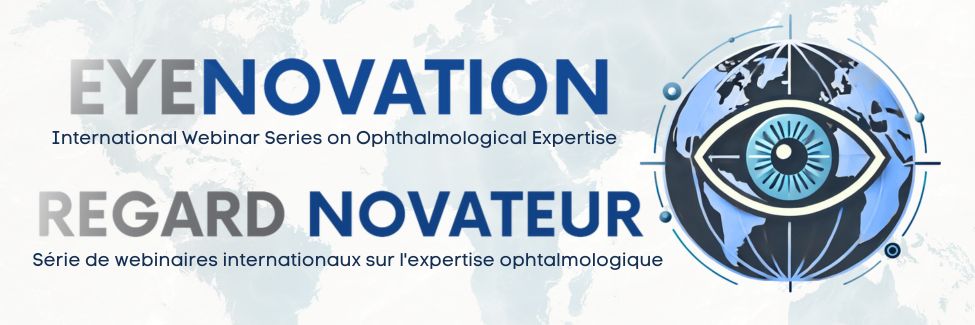
We’re excited to announce that our webinar, “EyeNovation: International Webinar Series for Ophthalmic Expertise” series, ‘The SIRE Sign and Functional Vision in Geographic Atrophy Treatments‘, was presented by Dr. Robyn Guymer on April 10, 2025, from 7:00 p.m. – 8:00 p.m. ET.
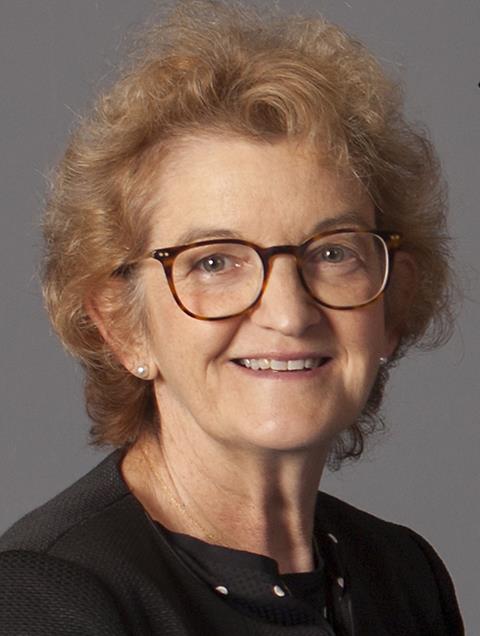
Professor Robyn Guymer is a Professor of Ophthalmology at Melbourne University, deputy director of the Centre for Eye Research Australia, and a senior retinal specialist at the Royal Victorian Eye and Ear Hospital.
A leading clinician scientist, she researches Age-related Macular Degeneration (AMD) and has co-authored over 400 peer-reviewed papers. Her work focuses on early AMD treatments, novel imaging biomarkers, and surrogate endpoints for early intervention trials.
She has led industry-sponsored trials, serves on pharmaceutical advisory boards, and is part of international macular disease groups. An inaugural fellow of the Australian Academy of Health and Medical Sciences, she was awarded the Member of the Order of Australia in 2018 and inducted into the Victorian Honour Roll of Women in 2021.
By the end of this webinar, you will be able to:
- Understand the relevance and importance of the SIRE sign
- Understand how functional vision has been tested in current GA trials
- Understand the issues around showing a functional change in vision in geographic atrophy
If you missed this webinar, not to worry! The recording is available below:
